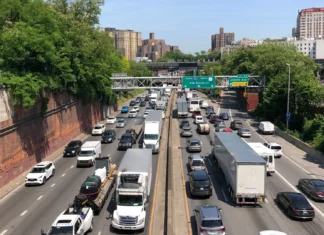
U.S. regulator changed the rules for fully autonomous vehicles Thursday.
From this point forward, automated vehicles will no longer require manual controls, so long as they provide the same amount of protection as human-driven vehicles. The National Highway Traffic Safety Administration (NHTSA) issued final rules this week, adapting the existing Federal Motor Vehicle Safety Standards (FMVSS) from decades-old conventions, which assumed a human being would always be in control.
While the change removes critical barriers for companies like GM-owned Cruise LLC, which petitioned the NHTSA to make the change, the agency emphasized the safety element for occupants in its release this week. “As the driver changes from a person to a machine in ADS-equipped vehicles, the need to keep the humans safe remains the same and must be integrated from the beginning,” said the NHTSA’s Deputy Administrator Dr. Steven Cliff.
The 155-page document is available through the agency’s website, elaborating on specific changes and outlining some of the more substantive changes from the proposed rule, published back in March 2020.
For example, the NHTSA emphasized that, even lacking manual controls, children should not occupy the “driver’s seat” of an autonomous vehicle. The final rule notes that the “driver’s” position has not been optimized to protect children in a crash, and originally the NHTSA suggested the car should suppress any motion when the airbag system detects a child in that seat. In the final version, though, the agency decided against requiring the vehicle stop any motion in those circumstances.

No current car qualifies as a fully autonomous vehicle
The rest of the NHTSA’s major rule changes, by and large, explain the agency’s decision not to move forward with certain elements of the March 2020 proposal. It also covers tweaks to definitions in the federal safety standards to reflect the mindset that occupants in ADS vehicles have the same level of protection as those in vehicles with conventional controls.
Under the current regulations, the NHTSA does not bar automakers from deploying automated cars, so long as they have manual controls equipped. Looking forward, the figures laid out in this final rule note automakers and consumers alike could save up to $995 per vehicle, as vehicles will not be required to have dual-mode controls.
Ultimately, the rule looks forward decades into the future, projecting cost savings out to 2050. At the present time, no vehicle houses full autonomous capability, and there’s still intense discussion about exactly when we may reach full Level 5 autonomous driving (per the Society of Automotive Engineers standard J3016), where vehicles can drive themselves in all areas with no human intervention.























